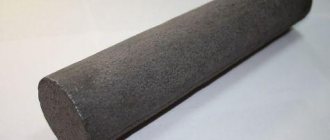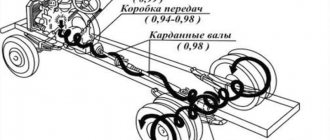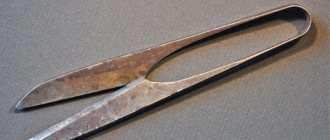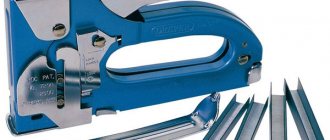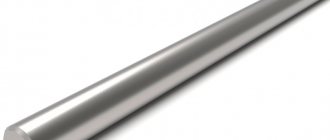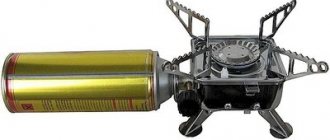Electrical tape is a universal, practical material that can be found in every home. Wires secured with insulating tape are excellent conductors of electricity and can withstand a wide range of temperatures. However, despite its intended purpose, it is most often used for non-standard solutions, such as gluing cracks, repairing broken or broken objects. But that’s not all: the inventive mind has found more than 100 different uses for it, sometimes the most unusual.
Varieties
The wide range of self-adhesive insulating tapes consists of products made from different materials, such as:
- PVC tape;
- HB electrical tape;
- heat-resistant fiberglass tape;
- silicone insulation;
- polyester tape;
- Kapton;
- linen insulating tape.
PVC tape
This is one of the most common types of electrical tapes, made from polyvinyl chloride films with an adhesive backing. Insulation is produced in a wide range of colors (GOST 16214-86). The ability to stretch allows you to cover contact connections of the most complex shapes without forming folds. Disadvantages include susceptibility to high temperatures (up to + 1050C).
Color range of PVC electrical tapes
HB electrical tape
An adhesive composition (GOST 2162-97) is applied to rubberized cotton fabric. Despite its unpresentable appearance and specific smell, CB insulating tape is very popular among electricians. This is explained by the low cost of the product and its fairly high resistance to high temperatures. The advantage of electrical tape is that it does not burn, but only melts. During work, an electrician can easily tear off the required piece of black cotton electrical tape with his hands. Using electrical tape x b, they create a durable, but far from airtight, shell of the wire connections.
Black cotton insulation
Heat Resistant Fiberglass Tape
The fiberglass base provides high heat resistance. The surface of the electrical tape has high adhesion. It can be painted, varnished and impregnated with special compounds. The material was developed (GOST 5937-81) as a thermal insulating tape for powerful transformers. It is capable of maintaining its technical characteristics when heated to 3000C. Thanks to the double-sided adhesive coating, the tape forms a hermetic insulation of wiring connections.
Silicone insulation
Thermal insulating tapes on a silicone basis, self-sticking, form a dense sealed layer. Use the material for special work. Withstands heating up to 3000C. In the cold, the tape does not lose flexibility.
Polyester tape
Insulating material based on polyester films is used in the production of transformers and high voltage stabilizers. The material does not stretch; sometimes it is made of fiberglass reinforced. Retains its properties at temperatures of 130-1600C.
Kapton
Polyamide tape is designed for insulating parts of high-tech electronic equipment. Kapton is used to cover the desktop of a 3D printer. It is used to cover parts of electronic circuits, where the heating temperature can reach 2600C.
Linen electrical tape
Fabric insulating tape is used for wiring wires in cars and other types of transport. Self-adhesive rag tape is not intended to cover exposed wire twists or exposed cable connections.
Creative uses
Thanks to the variety of colors, good adhesion to objects and inexpensive price, PVC tape can become an excellent assistant not only for its intended purpose, but also as part of room decor or even a form of art.
Using tape in decoration, you can lay out various geometric shapes from it on the wall or ceiling.
Also, using multi-colored ribbon to decorate furniture can give things a new creative look. On a table or chair, you can alternately place strip after strip of PVC tape, starting from one edge and reaching the opposite. This will not only give the item a new look, but also protect it from external factors and possible damage.
And the design of a children's room can be turned into a whole play complex with a child. You can use duct tape to make a picture on the wall, and it can always be easily converted into something else. On the floor you can sculpt a road with streets, alleys, intersections and learn the rules of the road.
In the modern world of art, PVC tapes are used to make paintings, bouquets, and displays. Artists and sculptors open large exhibitions dedicated to insulation products.
American designer Rebecca Ward has been using electrical tape in her works for a long time. Using PVC products, she decorates banquet halls, creates three-dimensional figures and renews interior items.
You might be interested in: Application of an electrical transformer, its concept and types
Typical mistakes made by electricians
A typical mistake is purchasing and using cheap Chinese insulating materials, which are often unable to withstand even small loads. Cheap Chinese electrical tape can cause a short circuit and even a fire.
Another common mistake is the use of unsafe twists instead of a better quality connection of wires. The best solution is to use terminal blocks, which are a reliable connection method and also provide high-quality electrical insulation.
Another common mistake is connecting a stranded wire into a screw terminal without crimping it with a special sleeve or tinning it. The connection will weaken over time, which can lead to ignition and fire.
Heat-shrink tubing
Instead of insulating tape, in many electrical work you can and should use heat shrink tubing. What are the differences between these insulation solutions?
- Heat shrink is usually a more durable, aesthetically pleasing and durable solution.
- To “attach” it to a wire or other element, you need to heat the tube.
- Heat shrink is not universal, its size must be adapted to the insulated element.
- Unlike insulating tape, heat shrink tubing is rigid and non-removable
What is important when choosing heat shrink
Size. One of them is the diameter of the hole before heating. And the second is the minimum diameter of the hole after heating. The tube will not shrink indefinitely
Therefore, the tube must not only fit onto the cable before insulation, but also be pressed against the wire or connector after heating. If you want to use a cable marking tube, its color is important. Non-flammability. This parameter should also be of interest, especially when we intend to use a lighter to heat the heat shrink tube.
Heat shrink tubing can be purchased in long sections (usually 1m), but you can also buy a set of several short pieces of different colored heat shrink in one package.
4.1. How to choose?
Stores sell tape in rolls with a diameter of 85 mm, a width of 11–20 mm and a thickness of more than 0.11 mm.
When purchasing, do not forget about pragmatism! To insulate thin wires, a narrow 11 mm tape will be sufficient, but for pipes you will need a wider one, at least 15-19 mm. The length of the tape determines how long it will last. For home use, 10 m of tape is enough, but for daily work you should take more, for example, 20 m. Also pay attention to the color. You can mark the wires with a tape of the color you need or mask the finished section. Now the variety is much greater than before, because previously only blue PVC electrical tape was sold. Remember that a good tape is smooth, has a lot of stretch and doesn't pull away from the sleeve. There should also be no unpleasant odor.
Types of insulating materials and their scope of application
We've decided on the contact connections - now let's figure out how to insulate the wires? For household use, there are usually two options - insulating tape or heat shrink. But each of these materials has a lot of varieties and areas of application. So let's look at them in more detail.
Insulation tape
Let's start with the most common and time-tested material - insulating tape. This material is applied to the conductor by winding it around the conductive part. But the properties of this product depend on the material of manufacture. And there are not so few of them.
So:
- The most common option is PVC electrical tape. It is made of polyvinyl chloride film, on the surface of which a special adhesive composition is applied. This solution should ensure good adhesion of the tape to most types of materials.
- In our country, PVC electrical tape with a thickness of 0.1 to 0.2 mm is produced. The composition of the adhesive solution and the base of the sleeve also differ. In addition, the color range of such electrical tape, which in Soviet times was only blue, has recently expanded.
- This material can be used to insulate any type of connection. The insulation resistance of such electrical tape, according to standards, is tested at a voltage of 1000V.
In electrical engineering, it is often necessary to mark or insulate a piece of cable, strengthen wire connections, protect elements from moisture, and so on. This is a simple matter. All you need to do is have some insulating tape, wrap it in the right place and you're done. But as usually happens, you have to write about such simple things in great detail, since both beginners and fairly experienced electricians make a lot of mistakes.
This article will look at two methods of insulating wires using vinyl insulating tape and heat shrink tubing. You will learn how to do it right and wrong, what tools are needed and some “company secrets”.
Manufacturing process
Production takes place in accordance with GOST standards. A wide range of materials are used in pure or combined form: polyvinyl chloride or cotton raw materials. These are common materials widely used in various fields of work.
Natural materials, woven materials that provide electrical conductivity, deserve special attention. There are a wide variety of electrical tapes on the market with their own pros and cons.
PVC based
Heat-resistant insulation tapes made of ordinary polyvinyl chloride have a small temperature range for successful operation. They demonstrate good tightness, elasticity, and dielectric properties.
At very high temperatures, the strips melt and become completely unusable; at subzero temperatures they break easily and stick very poorly to wires, which also does not suit consumers. Conventional PVC electrical tape can be used in car interiors and areas located away from the engine.
There are products made from polyvinyl chloride with non-flammable additives. Such products have higher heat resistance, the ability to self-extinguish in case of ignition, and can be used under conditions of high thermal influences. Some inconvenience is caused by the loss of elasticity with a significant increase in temperature. In this case, emergency situations are excluded, because the heat-resistant layer retains its insulating ability and integrity.
Composition and features
For electrical tape, polyvinyl chloride with various plasticizing additives is used. Because of this, the colors of insulation rolls are black, white, yellow, red and blue.
The peculiarity of the colors of the ribbons is that the cheapest products are painted in the above colors, except for blue. These rolls have low adhesion and at temperatures above 35-400 they lose their adhesive ability.
Note! The most reliable and durable electrical tape is blue material. Unlike insulating cotton tape, blue insulation has a higher resistance to current breakdown.
What to consider when purchasing
If you want to know how to choose a good electrical tape, then you need to pay attention to several important parameters:
Dimensions of the tape, in particular the width and thickness of the strip.
Appearance of the roll - its surface should be smooth without damage or gaps in the application of the adhesive.
Adhesion based on the density of the adhesive layer. With a base thickness of about 130 microns, the thickness of the glue should be at least 15 microns.
Type of adhesive. The rubber composition is characterized by increased initial adhesiveness with a slight increase during operation. There is also shear strength, good solvent resistance and moderate resistance to sunlight and temperature changes.
Breakdown voltage. If for PVC tapes this figure is 5 kV, then for fabric samples it is 1 kV.
The best manufacturers of electrical tape offer a wide variety of modifications that have excellent insulating properties. Well-known brands include Sibrtech, Folsen, Navigator, Temflex, etc.
Insulating tape is a popular device for hermetic protection of electrical wiring, fastening cables with excellent dielectric properties. When purchasing, you need to pay attention to the purpose of use and the quality of the material.
But at the same time, it is important to use it correctly - attach it to a dried, cleaned and treated surface, work in the temperature range of 20-40 degrees, and also store the electrical tape in a clean and dry place.
Characteristics
If for some reason the temperature at the place where the cotton tape is applied exceeds 100 degrees, the fabric will begin to fade and melt. But due to the fact that the protective fabric is wound in several layers, they all coke, merging into a single whole. Moreover, even if the contacts burn or in places where there is knocking, twisting of wires and the release of a significant amount of thermal energy, the fabric will not catch fire. Compliance with fire protection standards and regulations will be ensured.
Also, fabric insulating material can be used at subzero temperatures. In such conditions, the PVC film curls, tans and loses its properties. But cotton tape, due to the presence of a fabric layer at the base, does not have such disadvantages.
This material has one minor drawback - the tendency for threads to peel off along the edges of the fabric. Also, the appearance of the finished twist cannot be called aesthetic. But if insulating material is used outdoors, in places where strength, reliability and durability come first, cotton fabric is out of competition.
This material can also be used to temporarily eliminate small water leaks from cold water supply or sewerage systems. Home craftsmen often use electrical tape to temporarily fasten broken wooden parts (table or chair legs, shelves, etc.).
Insulating tape made from cotton fabric is an affordable and effective material to use.
How to use polyurethane foam
Before starting work, it is recommended to protect your hands with gloves. Then the cap is removed from the valve and the gun or adapter tube is screwed on. To mix the components of the composition inside the container, it is thoroughly shaken for about a minute - this point cannot be neglected.
Before application, the surface to be treated is wetted with water. The cylinder must be kept upside down: this is the only way the gas accumulating at the top will effectively push the sealant out.
When filling the seam, you need to move from top to bottom, filling no more than a third of the depth of the lumen. As the material expands, it will fill the entire gap.
At the end of the work, to speed up the hardening process, it is recommended to spray the sealant with water several times for 30 minutes. The foam hardens completely after 8 hours.
It is better to avoid getting foam on your skin, floors or other surfaces. If this happens, it is necessary to wash it immediately: in its frozen form, it is removed with great difficulty, mechanically (using a construction knife), with damage to the surface on which it accidentally fell.
Types of electrical tape and their use
There are several types of insulating tapes depending on their grade and the materials used for their production. Each of the materials has its own characteristics and technical characteristics. Various types of fabric, as well as polyvinyl chloride, are used as materials for the production of insulating tapes. Fabric tapes have higher strength and heat resistance, because... When exposed to high temperatures, they do not ignite, but char and harden. Tapes made from cotton materials are not inherently insulating materials, so they are most often used for cording. Let's look at electrical tapes made from the most common materials.
PVC electrical tape
Insulating tape made of polyvinyl chloride is the most famous and common material. This is that universal smooth electrical tape of bright blue or red color that our grandfathers used.
Basic characteristics of PVC electrical tape:
- standard roll width – 14-20 mm;
- withstands voltage up to 5000V;
- operating temperature from -30 to +50 degrees;
- elongation - 150%.
At home, such a tape can withstand voltages of up to 0.4 kV. The high strength and characteristics of PVC insulating tape make this material universal in use.
Insulating tape made of cotton fabric
Insulating tape made of cotton material based on calico and calico is less durable and stable, but, nevertheless, has also found wide application. Most often, CB insulating tape is used for wiring installation, harnessing and insulating exposed sections of wires. CB or fabric tape, as it is called, is often recommended to be used together with PVC tape for more reliable insulation.
Main properties of cotton tape:
- operating voltage - up to 1000V;
- operating temperature - from -30 to +30 degrees;
- storage conditions – 0-24 degrees;
- poor elasticity.
Due to their parameters, HB insulating tapes are used mainly for household needs. Often, thanks to its special property, fabric insulating tape is used in places with high temperatures. When exposed to extremely high temperatures, the CB tape does not melt, but ignites and subsequently hardens, thus forming a durable insulating coating. The high electrical conductivity and distinctive characteristics of CB insulating tape ensure wide demand for this material.
Dacron ribbon
A less common type of electrical tape is a consumable material made from polyester raw materials called lavsan. This tape has good strength and heat resistance, making it suitable for use for consumer purposes at moderate temperatures. Mylar tape has good adhesion to metal, is characterized by excellent strength and resistance to mechanical damage, and can also be used at temperatures from -25 to +150 degrees Celsius. The use of PVC insulating tape together with lavsan can provide more durable and reliable insulation.
Silicone and fiberglass tape
Another type of standard electrical tape is a material made from fiberglass and silicone. This material is characterized by excellent strength and reliability. The main feature of fiberglass tape is the ability to withstand temperatures up to 300 degrees Celsius, which allows the material to be used not only for electrically intensive household equipment, but also for powerful industrial devices. Fiberglass material does not oxidize, is resistant to fire and rotting, and can also be coated with coloring compounds.
Materials used for the production of electrical tape
Modern insulating tape is produced in accordance with Russian GOST standards. For its production, various materials are used in pure and combined forms. Most often in modern conditions it can be found from polyvinyl chloride and cotton material. These two types are considered the most common and are used in different fields of activity. Those made from natural woven or non-woven materials are especially popular. They provide excellent electrical conductivity and are often used for towing. There are other types of insulation tape, each with its own advantages and disadvantages.
History of creation
In the middle of the last century, American chemical engineers produced the first insulating tape based on polyvinyl chloride. However, the product had an oily surface, which negatively affected its adhesion.
After extensive testing of new materials, the company introduced a new vinyl version of electrical tape with a one-sided adhesive rubber backing. The first product samples were yellow and white, which made their surface unprotected from the destructive effects of ultraviolet radiation.
Over time, all these shortcomings were successfully overcome. Today's insulating material has absolute dielectric resistance, excellent adhesion, and can withstand the negative effects of chemicals, high humidity and ultraviolet radiation. A big advantage of the product is that it maintains its performance characteristics at low temperatures (down to -300C). To strengthen the insulating sheath of electrical connections, materials with double-sided adhesive coatings have been developed.
When is insulation needed?
- Wire color code. Sometimes you don't have the color of wire you need on hand. No problem—just have the correct color of electrical tape or “thermocouple” and use it to indicate proper cable functionality at both ends.
- Cable insulation - during electrical installation work, accidental damage to the wire insulation can occur. Usually they do not replace the entire wire, but put a patch on it.
- The housing can touch not only cable insulation, but also connectors that do not have their own insulation, or, for example, need to be protected from mechanical damage and moisture.
- Strengthening connections - sometimes the outer sheath of the power cord of a device is damaged or frayed. Then such a cable hangs on two or three wires without a protective layer. It’s only a matter of time before a complete breakdown occurs. There are also two options: replace the power cord or try to strengthen it at the site of damage.
- It happens that due to a large number of devices or cables, there is a bundle of wires in a certain area. They can be laid in the cable, secured with cable ties, covered with a frame or, if it is a short section, they should be wrapped with a heat shrink sleeve.
Non-standard ways to use the material
You already know the purpose of electrical tape, but in thematic blogs and forums you will find original ways to use this material. The simplest electrical insulating tape can become a magical material if you have imagination and ingenuity.
We suggest considering the following non-standard methods of using insulating tape:
If someone in your household is badly injured and begins to bleed, and you don't have anything on hand to stop the bleeding, duct tape makes an excellent bandage.
Alternative to medical tourniquets -- Painting work - electrical tape makes a great alternative to masking tape.
- Protection against ticks - when you go to the forest for a picnic or a hike, the best solution is to wrap the sleeves and edges of your clothing with tape so that neither ticks nor other insects crawl under your clothing.
- Inconspicuous fastening - if a floor mat or even a carpet runner slides across the floor, then they can be attached to the floor from the back side using double-sided insulating tape.
- Together with ropes – duct tape can be used to tie items together while they are being transported instead of the usual twine.
- Decoration – Multi-colored insulating tape can be a great decoration for decorating a room.
Which insulating tape to use for its intended purpose, and which for non-standard solutions, is up to you to decide.
Common insulating materials and their properties
Electrical safety rules provide for the use of:
1. PVC electrical tape. Its most important advantage is high elasticity. Disadvantages include rapid deterioration and peeling in conditions of high humidity. Insulating tape is perfect for working in a dry room, as well as when wires need to be color coded. Multi-colored electrical tape can perfectly indicate the presence of a phase, zero or ground;
2. HB electrical tape. This material has a cotton base. It can be used not only for work at home, but also for manipulating wires under the hood of a car. CB electrical tape is more resistant to moisture, various types of dirt and low temperatures;
3. Heat shrink tubes (HERE). Modern heat-shrinkable tubing is deservedly considered one of the most reliable insulating materials. It will be able to insulate wires located in the house, in the ground, in a car and even under water with the same quality. For domestic needs, this insulator is considered optimal;
4. PPE caps. This type of insulation is best suited for twisting wires. In terms of their insulating properties, the caps are, of course, inferior to heat-shrinkable tubing, but they are quite suitable for insulating conductors in a chandelier or under a suspended ceiling.
The insulating materials listed above are quite reliable and are in high demand. The rest of the article will cover the basic rules for insulating bare conductors.
Since conductor insulation has to be done quite often at home, it would be a good idea to familiarize yourself with the basic recommendations for its implementation:
Before using electrical tape, you should securely twist the exposed wires. When working with stranded wires, it is advisable to solder them thoroughly. To begin with, the twist should be bent to the side (as in the photo). The next step is to wrap a double layer of electrical tape around it. Electricians with extensive experience often act this way. Elastic insulating tape is perfect for insulating current-carrying conductors in a distribution box, any household appliance, and when moving an outlet. The quality of the connection will not change even when a layer of plaster is applied to the resulting twist;
A fairly simple procedure is to insulate the cores using heat shrink
It is important not to forget that the tube should be put on one of the conductors before connecting them. Once the connection is complete, it will no longer be possible to put a tube (cambric) on the twist
After moving a piece of tube to the junction, it is heated with a construction hairdryer;
If you don’t have a hairdryer at hand, you can effectively replace it with a regular lighter. When heated, the heat shrink should “sit” well on the twist. HERE tubes are also recommended for use in cases where the connection point will be immersed in water or laid in the soil. Insulation using heat-shrinkable tubing will be the best option when the twisting area must be reliably protected from moisture.
The use of PPE caps will be a good option when manipulating wires in the house. Their main advantage is their compactness and speed of use. This cap must be screwed all the way onto the junction of the wires.
When working with fairly thin wires, for example in headphones, using electrical tape will be ineffective. It will not fit tightly to them. You can replace it with regular superglue by applying a few drops to the bare area. For networks with a voltage of 220V, this method is not suitable, since the glue or silicone sealant will quickly fall off when twisted. For the same reason, it is not recommended to use a glue gun to insulate wires. To ensure that the twisting area is reliably protected from pets, it can be carefully wrapped with tin foil.
After you connect the bare wires by twisting or soldering, you need to properly insulate the junction. Today, there are several main ways to insulate conductors - using electrical tape, heat shrink, or even special PPE caps. Next, we will tell readers how to insulate wires in a wall, under water and even underground.
4.2. How to use and store?
When insulating electrical wiring, it is best to wind 2-3 layers. PVC electrical tape does not adhere well to wet, dusty and slippery surfaces. Before gluing, clean the surface and, preferably, wipe it with a 50% isopropyl alcohol solution or sand it. Solvents, flammable and simply aggressive substances (including silicone and polymer surfaces) can damage the tape. PVC electrical tape has a shelf life of 3 years, but if properly stored it can also be used effectively after 10 years. It should be kept in a room with humidity less than 80% and a temperature of 5-40°C away from batteries. If you constantly use electrical tape at work, it is recommended to buy several rolls at once. Nowadays it is easy to purchase both domestic and imported products of different parameters (length, width, color). Even if you don’t use it often, always keep at least one skein at home in case it comes in handy.
PVC insulating tape. Top 3 - The most famous and best brands in terms of quality and reliability.
EKF is an international company, one of the world's largest manufacturers of electrical products, the quality and reliability of which is recognized throughout the world.
Over many years of its own production practice, it has accumulated a wealth of successful experience, thanks to which it is possible to combine the highest possible technical characteristics of products, attractive design, ease of installation and maintenance.
Today, the company’s product range is huge and includes thousands of items: circuit breakers, measuring instruments, sockets, controllers, electricity meters, switches, extension cords, surge protectors, RCDs, sockets, bells, connectors and much more.
All news is available in our special section below.
Expanded color range of SafeFlex electrical tape – more installation options
The SafeFlex line of professional PVC electrical tape is replenished with brown tape. The product is produced in rolls 20 m long, the film width is 19 mm. The new product can be used for insulating and marking conductors, in particular, for marking phase...
PVC insulating tape EKF SafeFlex
Read more - News | New items
During its activity, Feron has significantly expanded its product range.
Today Feron produces various types of lamps, household fixtures, electronic components, decorative and holiday lighting.
High-tech equipment allows us to provide high quality products that meet modern safety requirements.
In the Feron manufacturer's card you will find many interesting new products, with the help of which you can select equipment for any residential or public facility that makes lighting not only modern, but also efficient.
Insulating tape Feron INTP SERIES
PVC insulating tape is created on the basis of polyvinyl chloride and is produced in the form of a roll of tape.
Features and advantages of Feron INTP electrical tape.
— high-quality electrical insulation when wound in two or three layers; - the increased elasticity of the electrical tape contributes to its strength...
News | New items
Feron (Feron) PDF catalogs
ERA – Lamps are invariably in demand in the lighting equipment market due to their elegant design and high quality.
The range of Era lamps is wide: spotlights, fluorescent, tabletop, LED panels and spotlights...
A wide range of models offered by the manufacturer allows the consumer to choose the most suitable lamp for him.
You can read more about Era lamps in this section of the site below.
ERA PVC insulating tape is now available in gray!
The range of ERA PVC insulating tapes has been expanded. The assortment now includes insulating tapes made of polyvinyl chloride in a new color - gray. They complemented the color range consisting of blue and black colors.
With a footage of 20 meters, the new product is presented in two widths: - 15 ...
News | New items
ERA (noalias) PDF catalogs
Material characteristics
PVC insulating tape is a classic adhesive tape classified as consumables. The specified consumable material comes in two types depending on the material used for its production: PVC and cotton. In the professional sphere and in the home, electrical tape is considered an indispensable universal material, which has many advantages:
- universal coating;
- has no pungent odor;
- excellent material adhesiveness;
- availability;
- excellent elasticity;
- moisture resistance;
- electrical tape can withstand temperatures up to 105 degrees Celsius.
The main purpose of the material is clear from its name - insulating wires, protecting objects from external factors such as dampness, sunlight, dust, chemicals. In the professional sphere, the material is used primarily to insulate electrical wires, but in everyday life it is often used to connect various parts, glue cracks and broken parts.
A Question of Choice
Before purchasing a tool, it is always wise to check its specifications and other features. You should take into account the wide range of types of insulating tapes.
In this case, we start from width, length, material, grade and adhesion. And most importantly, we define our goals.
Characteristics of PVC tape
This type of electrical tape is sensitive to humidity, low and high temperatures. GOST 16214-86, which outlines the requirements for PVC tape, allows its use at a maximum temperature of +70C. If the temperature rises higher, then it cannot be used - the tape will melt, emit an unpleasant odor and release toxic substances into the atmosphere. Limitations also apply to excessive cooling: at temperatures below zero, the tape comes off as it loses its adhesive properties.
The adhesive layer, which is applied to the PVC base, is a mixture of rubber and acrylic glue. These compounds are non-toxic and safe for humans.
Standard Specifications:
PVC tape is recommended for the following operating conditions:
- high humidity;
- exposure to sunlight;
- presence of solvents and salt solutions.
The color spectrum of PVC tape is wide, but two colors are most often used: blue and black.
2.2. Production now.
Modern PVC electrical tape is made from plasticized polyvinyl chloride film with a layer of glue applied to it. There are two types of glue: rubber helps the tape improve its resistance to deformation and solvents and stickiness, and acrylic, although difficult to stick at first, increases the strength of the tape connection so that after a while it becomes almost impossible to break. In addition, the sun's rays cause much less damage to acrylic glue. The tape sleeve can be made of plastic or cardboard. The second is much more popular due to the fact that PVC tape becomes stickier due to two layers of glue with a primer between them. The best electrical tape is considered to be the highest grade tape with rubber adhesive: its elasticity, stickiness and safety do their job.
Wire insulation methods
Heat shrink tube (sleeve)
Externally, the tubes resemble ordinary wire insulation made of plastic. The principle of using the tube is simple: it is placed on the cable before the wires are joined, after which the edges of the coupling are located on the cable insulation. Then, using an industrial hair dryer or a gas burner, the temperature of the tube is increased, as a result of which its diameter narrows and the surface is reliably compressed at the junction of the wires.
The advantages of using couplings are:
- high mechanical strength;
- providing protection against moisture penetration;
- reliable electrical insulation.
Heat-shrinkable sleeves provide reliable insulation of wires in any operating conditions
Expensive brand duct tape
Most cheap brands of electrical tape are only suitable for wrapping around a club or shovel handle, but not for connecting live wires. To ensure reliable insulation, you should purchase more expensive brands of electrical tape.
Working with any type of electrical tape is quite simple and does not require any specific skills or knowledge. It is recommended to start winding with the factory insulation of the wires at a slight angle so that the layers of insulating tape gradually move towards the twisting point. Winding continues until it goes beyond the boundaries of the twist and an empty tube is formed, the length of which corresponds to the width of the electrical tape.
Next, this section of twisted tape is bent and laid along the wire connection in the opposite direction. Winding the electrical tape continues at the same angle, only in the direction of the factory cable insulation. Excess material is cut off.
Silicone insulating coating
Silicone is considered an excellent insulator with high strength and low electrical conductivity. The material is able to reliably protect the inner surface of the wire from leaks and current breakdowns.
The temperature range of application of silicone insulation is quite wide; it is resistant to sudden temperature fluctuations. In terms of mechanical strength parameters, the material is close to liquid insulators. Also, the insulating coating made of silicone is non-flammable and lasts several times longer than ordinary electrical tape.
Using different terminals
The use of a PPE connecting type clamp ensures reliable insulation of twisted wires
This method of wire insulation involves the use of various types of terminal blocks with a dielectric housing, for example:
- Vago universal self-clamping terminals;
- screw clamps ZVI;
- PPE insulating clamps-connectors.
When connecting cables in a distribution box using terminal blocks, no additional insulation is required, since the devices themselves are already sufficiently insulated.
The terminals have several designs. They are available in the form of blocks or caps that securely clamp the connected wires. But at the same time, a lot depends on the current load - at high values it is better to use soldering of wires, and put an insulating sleeve on top of it.
Temporary insulation with tape
According to the rules, adhesive tape is not a certified insulating agent, therefore its use to protect twisted wires is prohibited. But there are times when there is no insulating tape at hand, and the insulation of the wires needs to be done very urgently. In this case, you can use tape, but only as a temporary solution.
The problem is that electrical tape is a colored PVC or cotton film with an adhesive surface on one side. Scotch tape is a plastic film with an adhesive base. In terms of dielectric properties, PVC and polyethylene are almost the same. There is a significant difference in the thickness of the material - electrical tape is several times thicker than adhesive tape, so for high-quality insulation of adhesive tape you will need to wind much more.
As temporary measures, just as incorrect as using tape, you can use adhesive plaster, fabric, cardboard or thick paper. Also, for short-term insulation of twisted wires, dense winding with synthetic threads or rubber tape is suitable. When using such isolation methods, you must understand that the risk in such cases is not always justified and all responsibility will rest only with you.
Types of heated electric floor
System with wire for heating. The model includes a thermostat, a temperature sensor, a wire with two-layer insulation, and heating is carried out due to the last element. This type is considered the cheapest, but at the same time it is the most labor-intensive option. First, the long wire is laid out on the base and secured with mounting tape.
System with heating mats. This option is convenient to install; the wire was laid at the factory and securely secured inside special reinforcing mats, so you don’t have to worry about how to lay the cable correctly
Just unroll the rolled mats and connect them to the network; it is important to choose the power correctly.
System with infrared film. This model is not at all similar to the previous ones; the heating source is a carbon material that produces infrared radiation, it is applied to the film. If you choose this option, you will not have to install a cement screed.
The final coating is often simply laid on film, but among all the ETP options, this is the most expensive and the least reliable.
How to properly insulate with electrical tape
Suppose you need to isolate fragmented insulation. You don't need to wrap the entire section at once; apply the tape to the cable insulation next to the damaged part of the insulation onto the undamaged section. But before you do this, make sure that the cord is not dusty, damp or dirty (the glue cannot stick in this case).
Consistently moving the insulating tape towards the damage and slightly pulling, wind the tape until you reach the undamaged wire insulation on the other side of the damage.
If the tape is much wider than the frayed area, simply wrap it 3 times in one place so that the damage is in the center.
Insulating tape can be cut efficiently using side cutters, but this is not always possible or affordable.
You can do without tools at all and firmly grasp the selected area on both sides of the area, stretch the electrical tape and eventually tear it. Of course, the edge of a torn ribbon will not be very beautiful, but in many cases it will do.
It is important that the breaks occur quickly. By slowly stretching the tape until it breaks, we will reach the point that the tape will be greatly stretched and even more damaged.
How to choose the right insulating tape
To know which insulating tape to choose so that it is suitable for your purposes, it is worth studying its varieties and features. When choosing a tape, you should take into account the following parameters: thickness, width, adhesion, base material, grade. Moreover, you should clearly understand for what purpose you plan to use the insulating tape.
For example, in order to insulate the wiring, you will need to take into account the maximum possible voltage and room temperature in winter and summer. We also note the fact that any type of insulating tape will ensure reliable fastening and is suitable for domestic needs.
Where and why is adhesive film used?
Adhesive tape is used:
- when carrying out electrical work in any room;
- during auto repair work for laying and insulating wiring;
- when connecting and sealing pipes that are wrapped with electrical tape in order to prevent the penetration of groundwater and moisture, which provokes the development of fungus and corrosion;
- when insulating glass packages, window tape is used;
- when packaging goods with manual or machine sealing of boxes;
- when repairing tourist boats or air mattresses as a temporary patch;
- When installing the air conditioning system, PVC ventilation tape is used.
The thickness of such tape varies: from 0.11 to 0.20 mm. This expands the scope of its application. For example, to ensure that your home is always warm, you can seal the seams and slopes on the frame with PVC tape for windows.
Imagine what human life would be like without the presence of such building material as a banal roll of adhesive film.
Where applicable
The material is widely used in engineering, construction, and installation work. This is also used to mark and secure electrical or internet cables.
In general, the main task is connection and isolation. Some consumers believe that regular packing tape can be used. However, this material is not intended for securing electrical or other wires.
It cannot withstand temperature pressure and begins to melt. Therefore, you should not use it for serious tasks.

